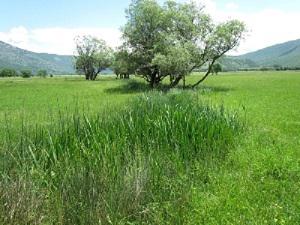Dejan Kulijer
Other projects
4 Jun 2013
Research and Protection of Threatened Dragonfly Species and Habitats in the Mediterranean Region of Bosnia and Herzegovina
The aim of the project is research and conservation of dragonfly species and their habitats in Bosnia and Herzegovina focusing on dragonfly species of European concern.

Habitat of Coenagrion ornatum in Dabarsko karst polje.
The dragonfly fauna of Bosnia and Herzegovina is only roughly known and many records are very old. The aim of this project is to collect new data on dragonfly species and their habitats in the country. Main focus is research and conservation of dragonfly species of European concern that occur in Bosnia and Herzegovina. Five of these species have decreasing population trend in Europe: Lestes macrostigma, Coenagrion ornatum,Caliaeschna microstigma,Lindenia tetraphylla and Leucorrhinia pectoralis.

Balkan Peninsula is biodiversity hotspot and one of the least explored regions of Europe. The lack of data is main problem in conservation activities in this area. This gap does not allow adequate conservation of dragonfly species and freshwater habitats. The knowledge of Odonata is important as they can be used as reliable indicators of freshwater habitat quality, for monitoring of habitat changes and also as ambassadors of freshwater habitat protection and awareness rising among general public.
This research will ensure new data that will help in identifying and mapping of dragonfly species diversity and distribution in the county. Data on species of European concern and rare species are important for assessing species status and conservation priorities at national and regional level. Important dragonfly areas and habitats, especially for species of European concern will be identified and mapped and report with recommendations concerning conservation measures needed will be submitted to nature protection institutions in the country.
Main focus of field research is Mediterranean part of Bosnia and Herzegovina where most of species of European concern occur, the area includes Hutovo blato wetland that encompasses some of the most valuable remnants of the Mediterranean wetlands in Europe.
Freshwater habitats in the country are increasingly threatened due to numerous plans for building of hydro-electric power plants. It is hope that collected data will be incorporated in conservation plans in existing protected areas and also used for future conservation actions.
Results of the project will enable development of monitoring schemes for dragonfly species and habitats that could be applied in future in cooperation with managers of protected areas and local organisations. The project will contribute to the work on National Red List of dragonflies and implementation of several international nature conservation strategies and conventions in the country.
Results will be also presented to general public, stakeholders and institutions through info boards, brochure, posters and media.